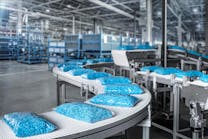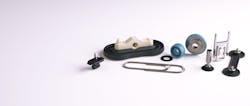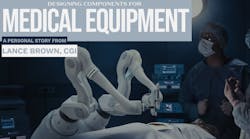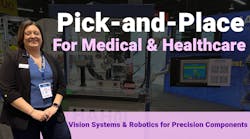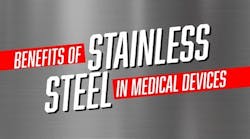Robotic Arms Dominate Today’s Automation Trends (.PDF Download)
In manufacturing, the part produced at lower cost and in less time than the competition will usually come out on top. Investing in automation, the Industrial Internet of Things, and machine vision are helping companies accomplish this and become more competitive.
However, as large, advanced automation equipment progresses, the expense can hinder return on investment (ROI). This has led to dynamic systems that can be integrated quickly and easily into production with a cost-effective price tag. Nowhere is this more evident than with robotic arms. This article will walk through trends in robotic arms, and what engineers should think about before placing an order for a shiny new piece of equipment.
Lower Barrier to Entry
“We're constantly breaking down the mental and financial automation barriers that our end users face,” says Esben Østergaard, CTO and Co-founder of Universal Robots (UR). “According to the old rule of thumb, the cost of a robot would be equivalent to one worker’s two-year salary. But collaborative robots are closer to one fourth of that price. With traditional robots, the capital costs for the robots themselves account for only 25% to 30% of the total system costs. The remaining costs are associated with robot programming, setup, and dedicated, shielded work cells.
“…with a collaborative robot, [installation] is typically less than an hour. That’s the time it takes to unpack the robot, mount it, and program the first simple task through an intuitive touchscreen user interface. Or, by simply grabbing the robot arm, showing it the desired path of movement.”
Typically, one of the first factors to impact ROI is the equipment’s cost. The initial price may also reduce access to technology simply because a company may not have the capital. For example, there are significant advantages to using composite automation equipment, but most companies still do many of the processes manually because of the cost and skill needed to run such equipment.
In the composite industry, automation often involves one-offs, or is complex. This is why, despite the known value of automating a composite line, many companies still rely on skilled technicians to make composite parts. Companies like Electroimpact have advertised feed rates of up to 660 lbs. per hour for a given machine and part configuration. Meanwhile, manually laying up parts might produce two to three pounds per hour.
In addition, the automated machines aren’t completely user-friendly, and there’s still a learning curve. The cost and time to integrate automation equipment are the main reasons companies aren’t investing, despite the proven advantages.
